Stretch marks come in all different colors—red, brown, and white are the most common. They can affect both men and women, and can occur anywhere on your body. They happen because of a (fairly) rapid increase in size of the body where your skin just cannot keep pace. Pregnancy, puberty and rapid weight gain can cause stretch marks.
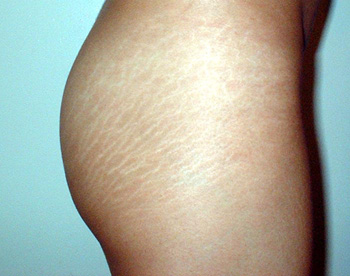
*Photo courtesy of ritesofpassage at blogspot.com.
Why the different colors, then? The reason is due to both the underlying color of your skin and the age of the stretch marks. New stretch marks tend to be red or brown whereas older ones fade to white.
At Celibre Medical, we have many different help with the color and texture of your stretch marks. We think it is important for you to know, however, that since stretch marks are a type of scar, the goal of any laser therapy is to improve the way they look, not remove them completely.
Red, brown and textured stretch marks are the easiest to treat, because our lasers are good at targeting excessive blood vessels (red), pigmentation (brown) and lost collagen (textured) that cause them to look that way. White stretch marks are a a different story. Hypopigmentation is the medical term for lightened skin or loss of skin pigmentation. White stretch marks are the hardest type to treat.
Although we can sometimes improve the appearance of light stretch marks, this is associated with improving the texture of indented stretch marks at the same time. For flat, white stretch marks, we do not have an option because lasers cannot add color to the skin.
Stretch marks are difficult to treat, but there are options available. Call today to see if we can help improve your stretch marks.
View All Blogs
There is a lot of misinformation about laser treatments for dark skin. One of the most common misconceptions is that African-Americans cannot have laser hair removal because of their skin color. While it is true that many of the same lasers and light-based devices used to treat patients with lighter skin types cannot be used on dark skin, if the correct laser technology is used, laser hair removal is just as safe and effective for those with dark skin as it is for those with lighter skin.
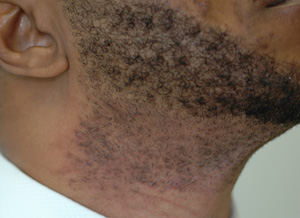
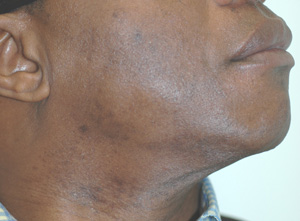
Before and after pictures of black skin laser hair removal
Laser hair removal works by interrupting the hair growth function with heat (generated by laser light) energy. The lasers that are used for laser hair removal are designed to target melanin which is the pigment that lines the hair follicle and gives the hair its color. Since people with black skin have a lot of melanin in their skin and hair, special laser technology must be used to properly target the melanin in the follicle while avoiding it in the skin. At Celibre, we use a device called the Sciton Profile.
The Sciton Profile is a long-pulsed Nd:Yag laser that uses a deeper penetrating wavelength of light (1064 nanometers) that targets melanin in the follicle and bypasses the melanin closer to the skin’s surface. This device is extremely safe for dark skin types and works very well for laser hair removal in black skin.
The one caveat for our African American patients is that it may take a greater number of treatments to achieve the same percentage of permanent hair loss than for a lighter skinned patient. The exact number of sessions can vary from person to person, so it is hard for us to give an exact answer to the number but it is usually more than with lighter skin types.
Our extensive experience with this device has proven it to be an extremely safe and effective option for anyone with dark skin that wants to get rid of unwanted hair. No matter what you’ve been told in the past, our team of exert laser practitioners can discuss a laser hair removal treatment plan that will work for you.
View All Blogs
If you’re pregnant or recently delivered a baby, congratulations! You’ve seen and felt a lot of changes with your body since you first found out you were pregnant. And while you wouldn’t trade anything for that sweet, little baby that’s either in your life or about to be, we’re sure you’ve welcomed some of those changes a lot less than others. One of the biggest concerns for new moms or moms-to-be are stretch marks. These happen when your skin is stretched by your growing baby faster than it can keep up with. There’s no single, sure-fire way to predict who will have stretch marks with pregnancy and who won’t, but research suggests that you may be pre-programmed to get them from the many hormonal changes that occur with pregnancy and nursing.
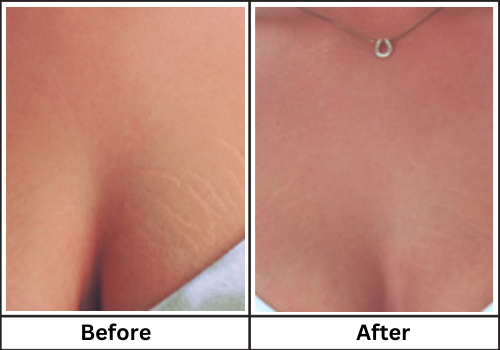
As anxious as you are to get your pre-baby body back, Celibre Medical recommends holding off on having any laser treatments on your stretch marks until you’re done nursing. Lasers and hormonal changes are not a good mix, and some women may either have no response to treatment or have an exaggerated or hypersensitive response to the lasers which can make things worse.
In fact, we often discuss waiting to treat stretch marks with lasers until you’ve totally completed your childbearing as they can return during subsequent pregnancies. Our commitment to you is to provide you with the safest and most effective laser treatments possible and we wouldn’t be doing that if we treated you during your pregnancy, while you were nursing or didn’t discuss the recurrence rate of stretch marks with you.
But don’t worry! We promise we’re not going anywhere! We will be here, happy to treat you when you are ready!
Demystifying Laser Tattoo Removal: What You Need to Know
Many patientsmultiple treatments
Laser tattoo removal is a customized process that requires both a knowledgeable, experienced laser practitioner and the proper technology to perform effectively. To estimate the number of treatments necessary, many factors are considered. Each of them is unique to the individual. Here are a few pointers that can help determine the most accurate answer to this question:
- How many colors are present in the tattoo? More colors – more treatments.
- What is your skin type (color)? Darker skin types can require more treatments.
- Are you willing to accept more aggressive treatments? Aggressive treatments carry a higher risk of change in the underlying skin color but fewer treatments.
- What kind of experience does your laser tattoo removal practitioner have? The more experience generally the fewer treatments.
- Will the most current, effective laser technology be used for your laser tattoo removal? Use the most appropriate technology to minimize the number of treatments.

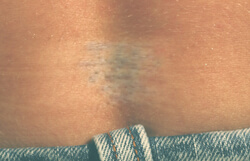
It is crucial to ask and answer all these questions to correctly estimate the number of necessary laser tattoo removal treatments. For most of our patients, we can provide results in 4 to 12 treatments. We know that is a broad range, but every tattoo is different. The key to your satisfaction and success with laser tattoo removal really depends on knowing how the process will unfold up front.
If you’re thinking about laser tattoo removal and didn’t discuss any of the above questions during your consultation, then you may want to keep looking. Finding a practice that is comfortable discussing and educating you on laser tattoo removal is ultimately more valuable than the one that simply has the lowest price.






































